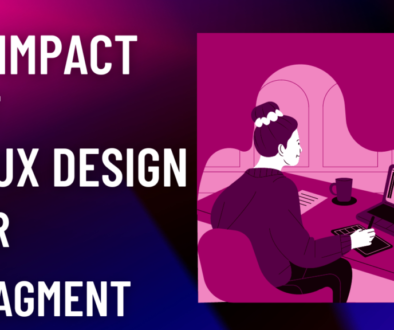The Fundamentals of UI/UX Design
In today’s dynamic digital ecosystem, where user expectations are continually evolving, the role of User Interface (UI) and User Experience (UX) design has become more critical than ever. Businesses recognize that a well-crafted UI/UX design is not just about aesthetics; it’s a strategic imperative for creating memorable and engaging digital experiences. This article delves into the core principles of UI/UX design, offering insights into how businesses can leverage professional UI/UX design services to enhance their online presence.
Understanding UI and UX Design
UI design focuses on the visual elements of a digital product, encompassing everything from layout and color schemes to typography and interactive components. The primary goal is to create an aesthetically pleasing and user-friendly interface. UX design, on the other hand, is concerned with the overall user experience, including usability, accessibility, and the emotional connection users establish with a product.
Key UI/UX Design Principles
User-Centered Design
Prioritizing the needs and preferences of the end user is fundamental. Conducting in-depth user research helps uncover insights into user behavior, allowing designers to tailor the UI/UX to meet specific expectations.
Consistency
Maintaining a consistent design language across platforms fosters familiarity. Consistency in layout, color schemes, and typography enhances user recognition and makes navigation more intuitive.
Simplicity
Simplicity is a guiding principle in UI/UX design. Avoiding unnecessary complexity and clutter ensures a clean and straightforward design, contributing to enhanced usability and user satisfaction.
Navigation
Intuitive navigation is crucial for a positive user experience. Establishing clear and logical navigation paths minimizes user frustration and ensures that users can easily find and access the information they seek.
Responsive Design
With the proliferation of various devices, responsive design is essential. Ensuring that the design adapts seamlessly to different screen sizes and resolutions is critical for reaching and engaging users across diverse platforms.
Visual Hierarchy
Establishing a clear visual hierarchy guides users through content. Elements such as contrast, size, and color are used strategically to highlight important information and direct user attention effectively.
Feedback and Interactivity
Providing feedback for user actions creates a sense of responsiveness. Incorporating interactive elements, such as buttons and animations, not only enhances user engagement but also makes the interface dynamic and enjoyable.
UI/UX Designing Services
Investing in professional UI/UX design services can significantly impact the success of your digital presence. Here are some key services offered by UI/UX design experts:
Wireframing and Prototyping
Designers create wireframes and prototypes as blueprints for the digital product. These visual representations outline the structure and functionality, allowing stakeholders to visualize the end product before full-scale development begins.
User Research and Testing
User research is a cornerstone of effective UI/UX design companies . Designers conduct thorough research to understand user behavior, preferences, and pain points. Testing prototypes with real users provides valuable insights that inform design refinements.
Visual Design
Experienced designers focus on creating visually appealing interfaces that align with brand identity. Utilizing principles of color theory, typography, and imagery, they craft designs that not only look good but also convey the intended brand message.
Usability Testing
Regular usability testing is essential for ensuring that the design meets user needs. By gathering feedback from real users, designers can identify potential issues, validate design choices, and make iterative improvements.
Information Architecture
Designers work on organizing and structuring information to create a logical flow within the digital product. A well-thought-out information architecture contributes to a seamless and intuitive user experience.
Accessibility Design
Ensuring that digital products are accessible to users with diverse abilities is a key aspect of UI/UX design. Designers focus on creating interfaces that are inclusive and comply with accessibility standards, making the product available to a broader audience.
Prototyping and Iterative Design
Prototyping allows for the testing of design concepts in a real-world scenario. UI/UX designers embrace an iterative design approach, making improvements based on user feedback, technological advancements, and evolving business requirements.
In conclusion, mastering the fundamentals of UI/UX design is not just about creating visually appealing interfaces but about delivering exceptional digital experiences. By prioritizing user-centered design, UI/UX design services businesses can stay ahead in the competitive digital landscape. These principles, combined with a commitment to continuous improvement and a user-centric mindset, form the foundation for building a digital presence that attracts, retains, and delights users. As the digital landscape continues to evolve, investing in UI/UX design becomes not only a strategic advantage but a necessity for businesses seeking to thrive in the online realm.






